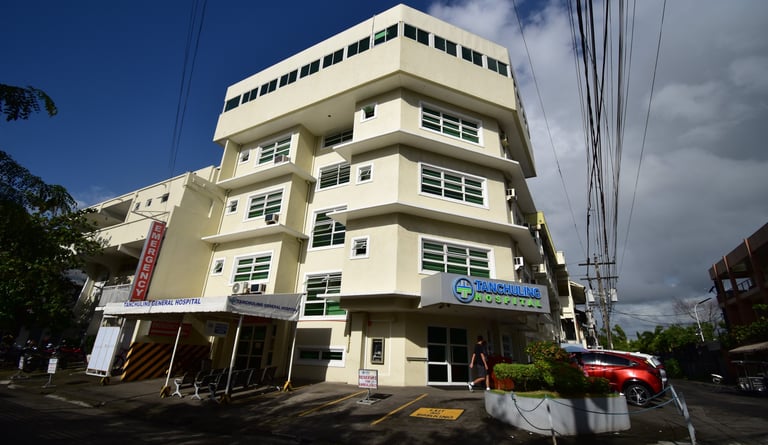A Design Journey of More than 10 Years: The Master Plan of Tanchuling General Hospital
Notes of experience in the design and master plan of Tanchuling General Hospital in Legazpi City, Albay. What helped make working together with doctors easier? How can one design a hospital with its future in mind?
SPACE
Richard Lasam
1/28/20253 min read


It all started when my Masteral Design class in UP-Diliman in 2012 tied up with a Masteral Public Health class in UP-Manila. The goal was for the doctors and architects in both classes to simulate the design process by working together on a project.
I was introduced to the owners of Tanchuling General Hospital (or TGH in short)—Dr. Iris Tanchuling and her husband, Mr. Vince Tanchuling. It was the right meeting at the right time—they were about to start a major upgrade of the hospital and were in need of an architect to guide the changes. So there I was, an architect barely two years after becoming licensed—tasked with the master plan and design of TGH.
As a background, TGH was built in the 1970s and evolved from a family clinic to a Secondary Level Hospital that catered to the people of Legazpi City in Albay. Its founders were specialists in Pediatrics and Maternity cases, and as such the facility has cared for generations of Bicolanos over the decades.
And so the journey began: annual trips to Legazpi from Manila to visit the hospital and to have a feel for the place. The irony of the fact that the flight itself is just 45 minutes long while the waiting in the airport takes over two hours will always be removed from my mind whenever the spectacle of Mt. Mayon greets me—such a magnificent volcano! Visiting the local sights after working was also a treat. I particularly enjoy going to the Bay of Legazpi City and watching the people going about their day.
I have learned so much while working on this project, and here I want to share three insights on working with doctors and other stakeholders.
1. Open Communication
Over the years, I’ve learned that long term design requires that the architect and the client have a friendly relation with each other so that friction between the two parties will be minimal.
From the client, informing the architect of changes to the direction of improvement of the hospital is always a must, so that the architect can adjust the plans properly.
For the architect, a clear and transparent presentation of how the design process is being conducted, as well as how one calculates the Professional Fees being charged (this is very important!).
It boils down to one aspect: transparency of intentions between architect and client. If this is achieved, the project can prosper.
2. Listen to the Experts
Never forget that we are all specialists of different fields—no one can possibly be an expert in everything. As an architect for healthcare facilities, I learned long ago that one should listen to the specific needs of the doctors in terms of what they want for the design of their departments and combine their knowledge to the architectural concepts that I know. In that way, the architect really acts as an interpreter for the doctors’ needs and wants for the physical space.
As I often tell the thesis students who ask for my advice in their projects: we are architects, not doctors—you do not need to know how to cure the disease, what you need to know is how the doctor operates in the physical space so you can design it properly.
3. Plan Ahead
Among the building types of architecture, the hospital is one of the most dynamic. Changes due to upgrading technology and increasing patient demand need to be addressed so as to make sure the hospital can stay relevant and up-to-date with the needs of the community.
In that light, plan ahead! Design departments and corridors to anticipate potential future spaces that the client may need. For TGH in particular, I designed a third floor patient ward in the early 2010s to have a corridor that in the future might become a connection to an adjacent building that may become a part of this hospital—and sure enough, by 2023 we began planning a bridge that connected to the hospital from the adjacent building, and it was easier to plan since the corridor connection was already there.
In the future, I will also delve on the insights I got from designing the departments inside the healthcare facility.
